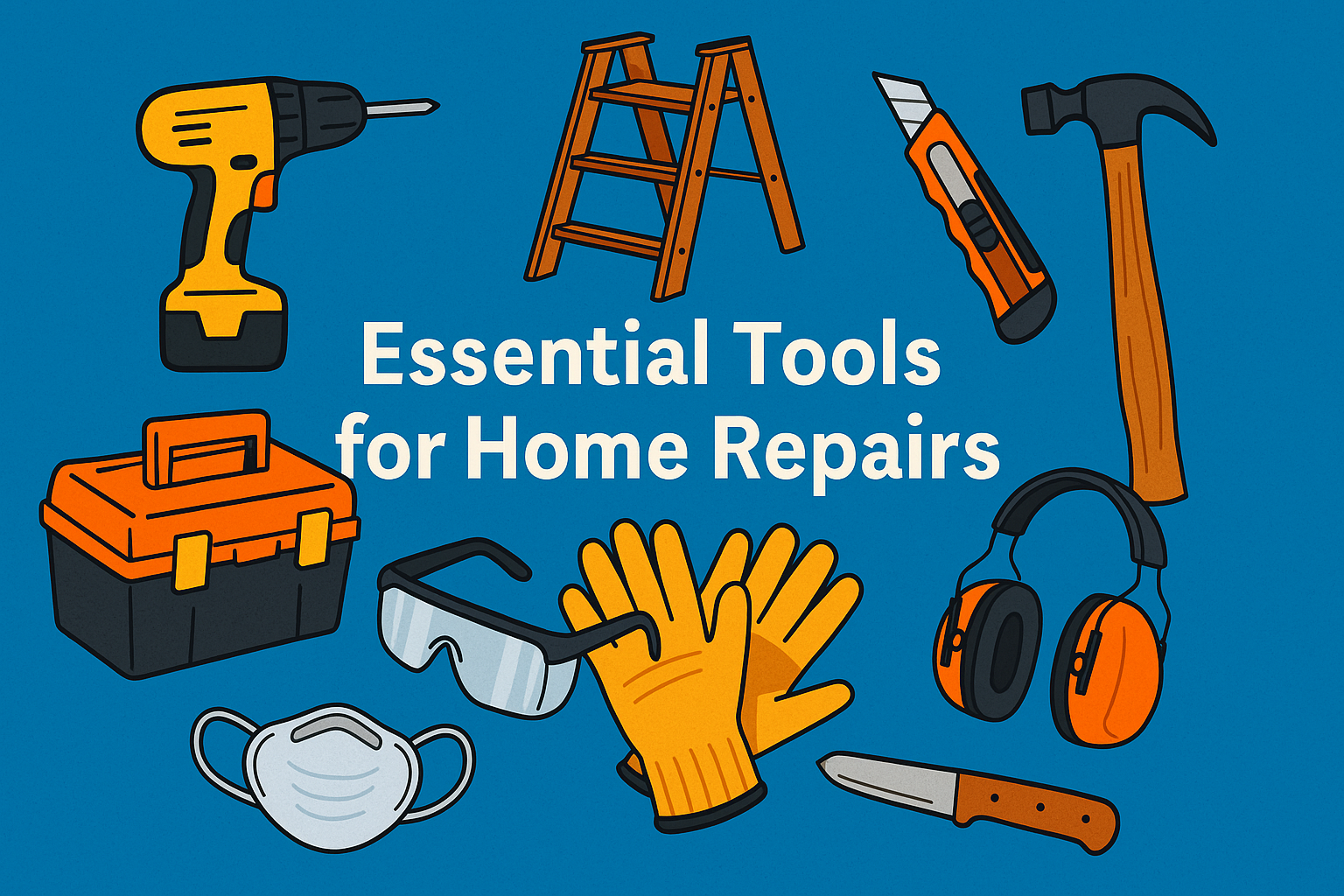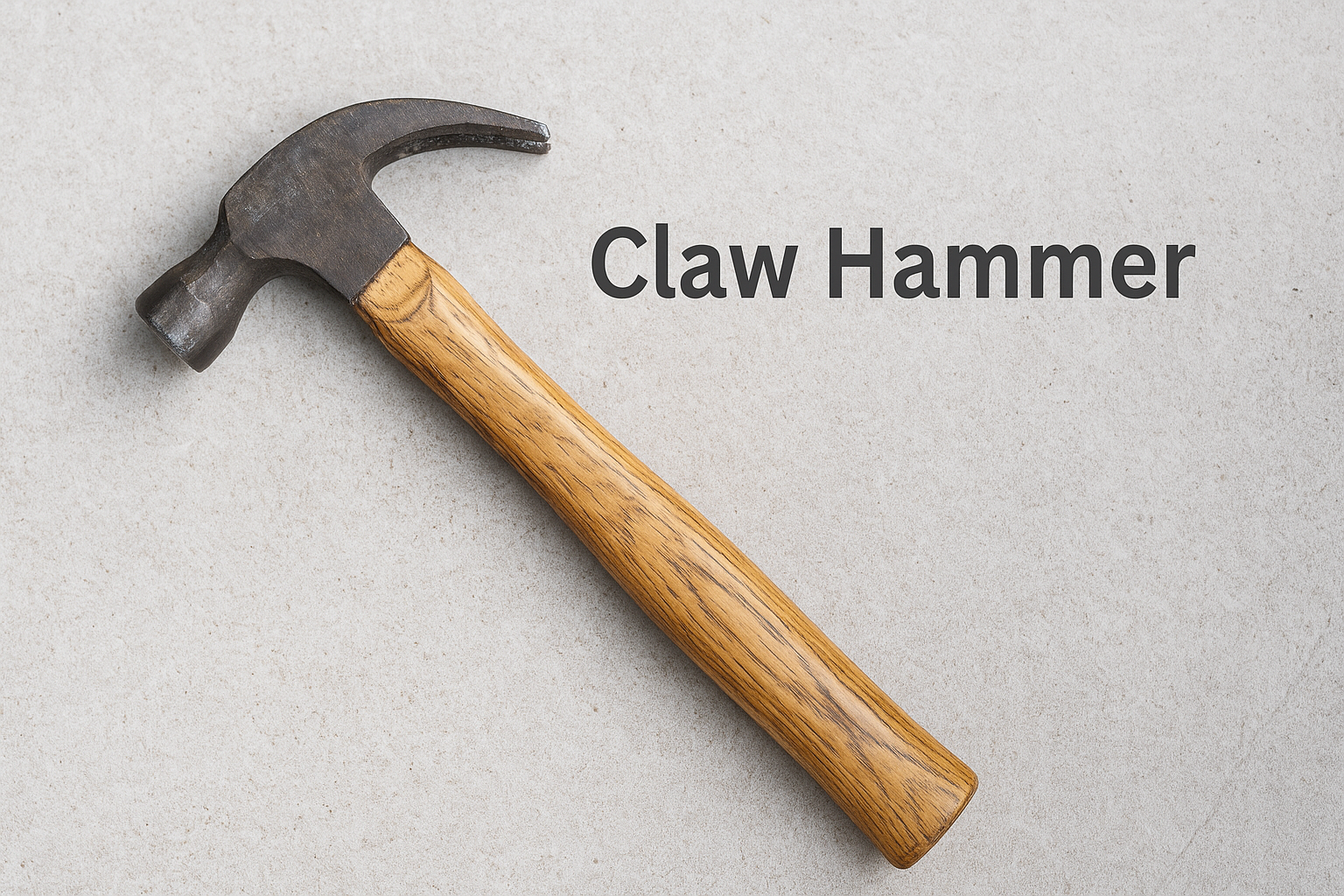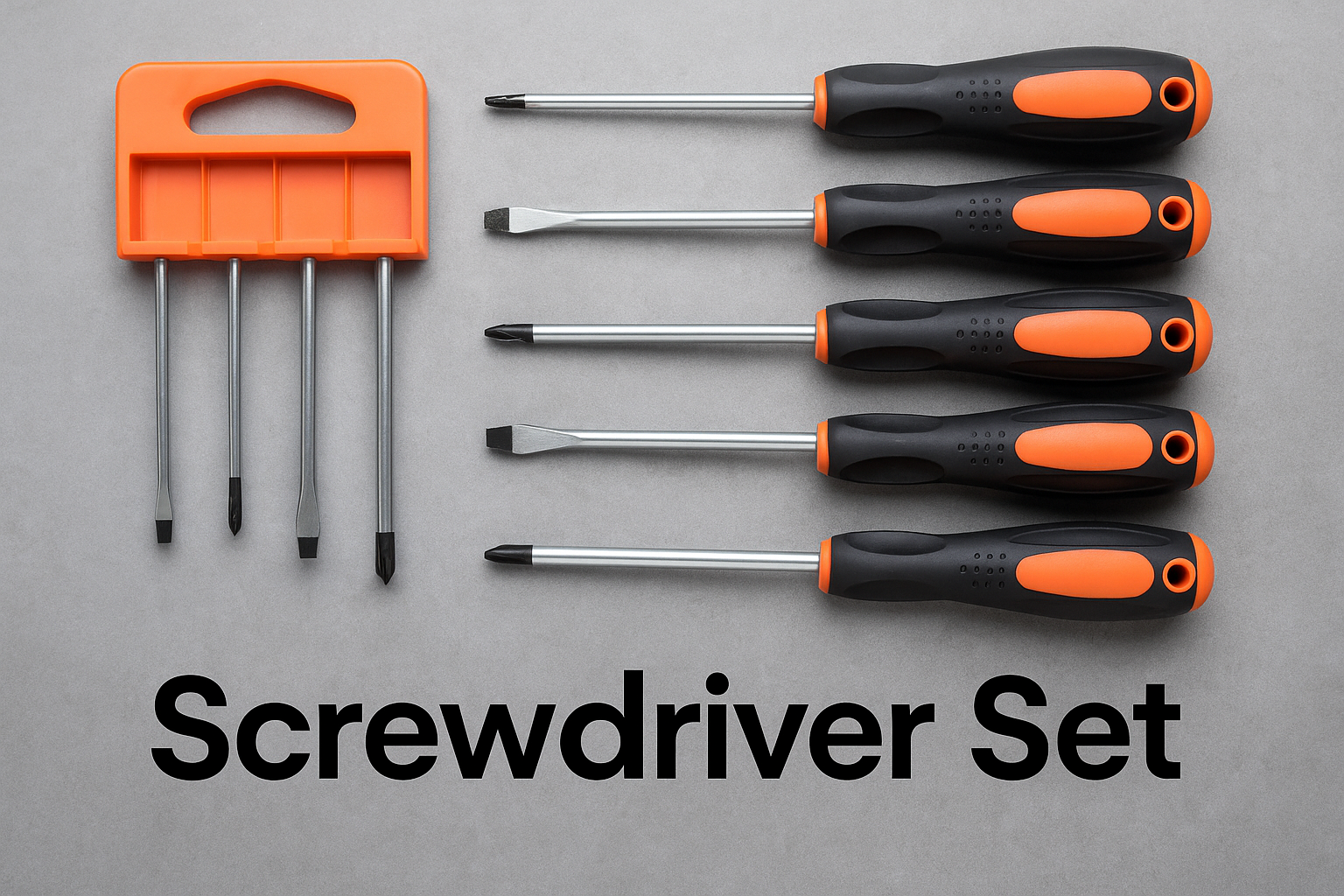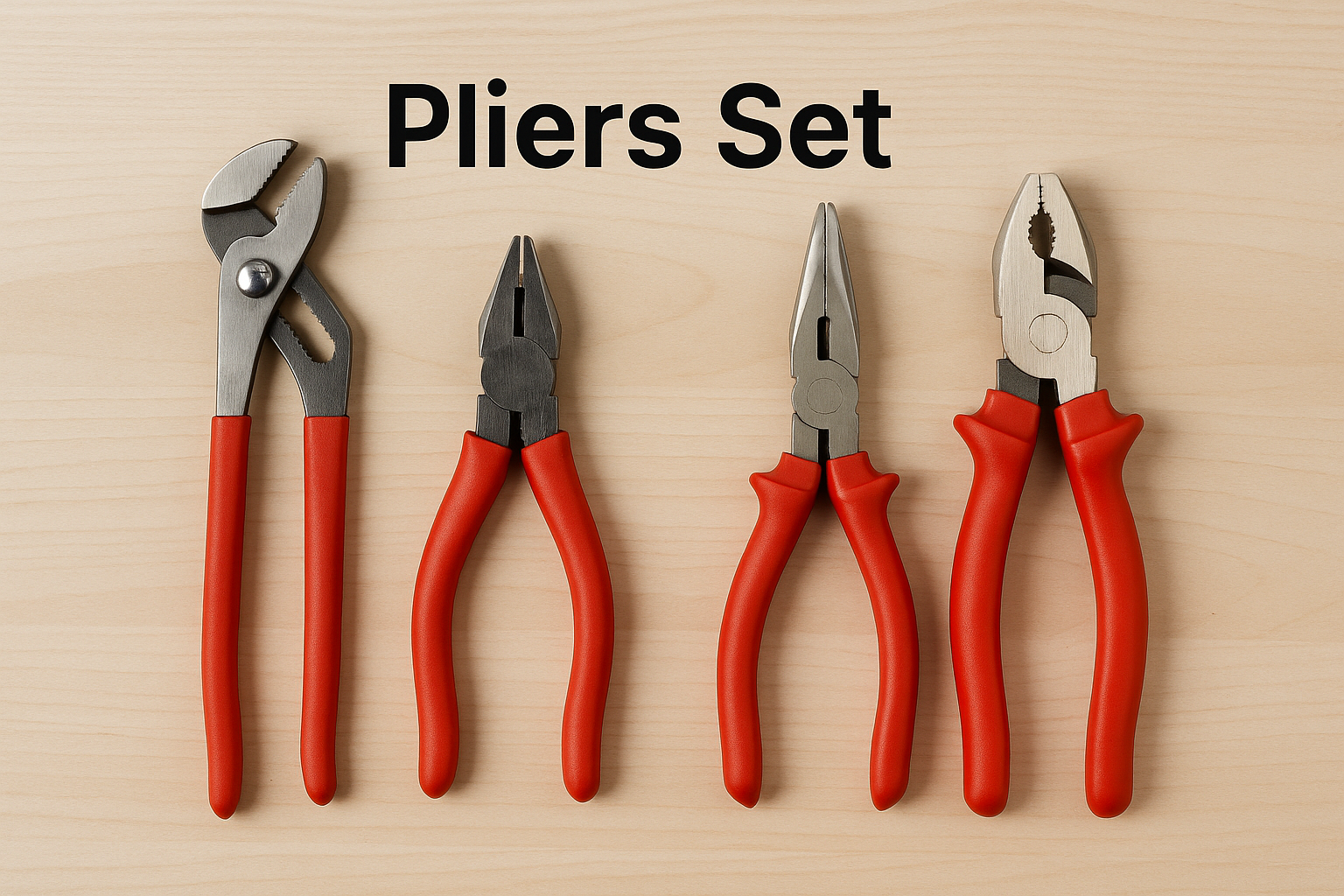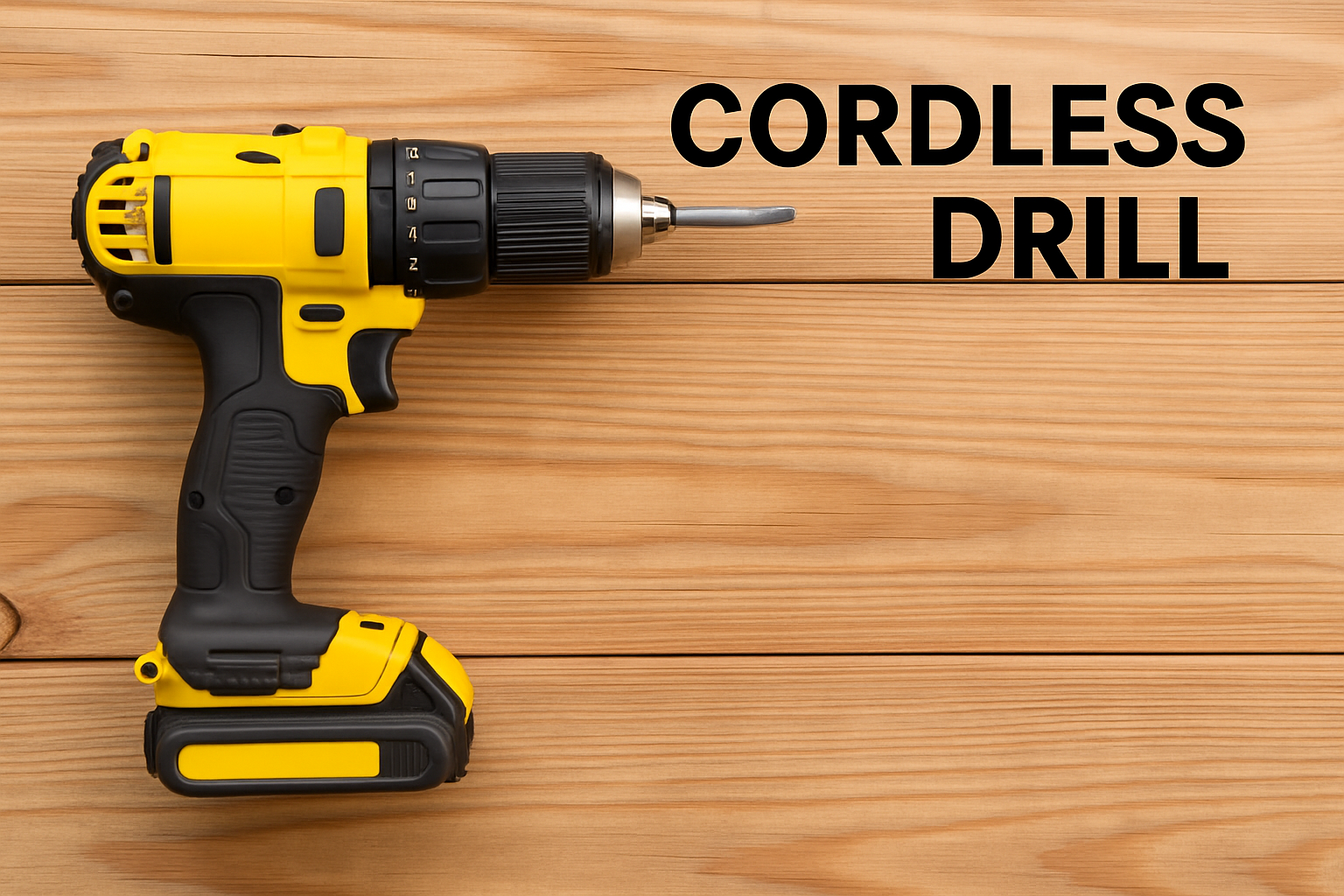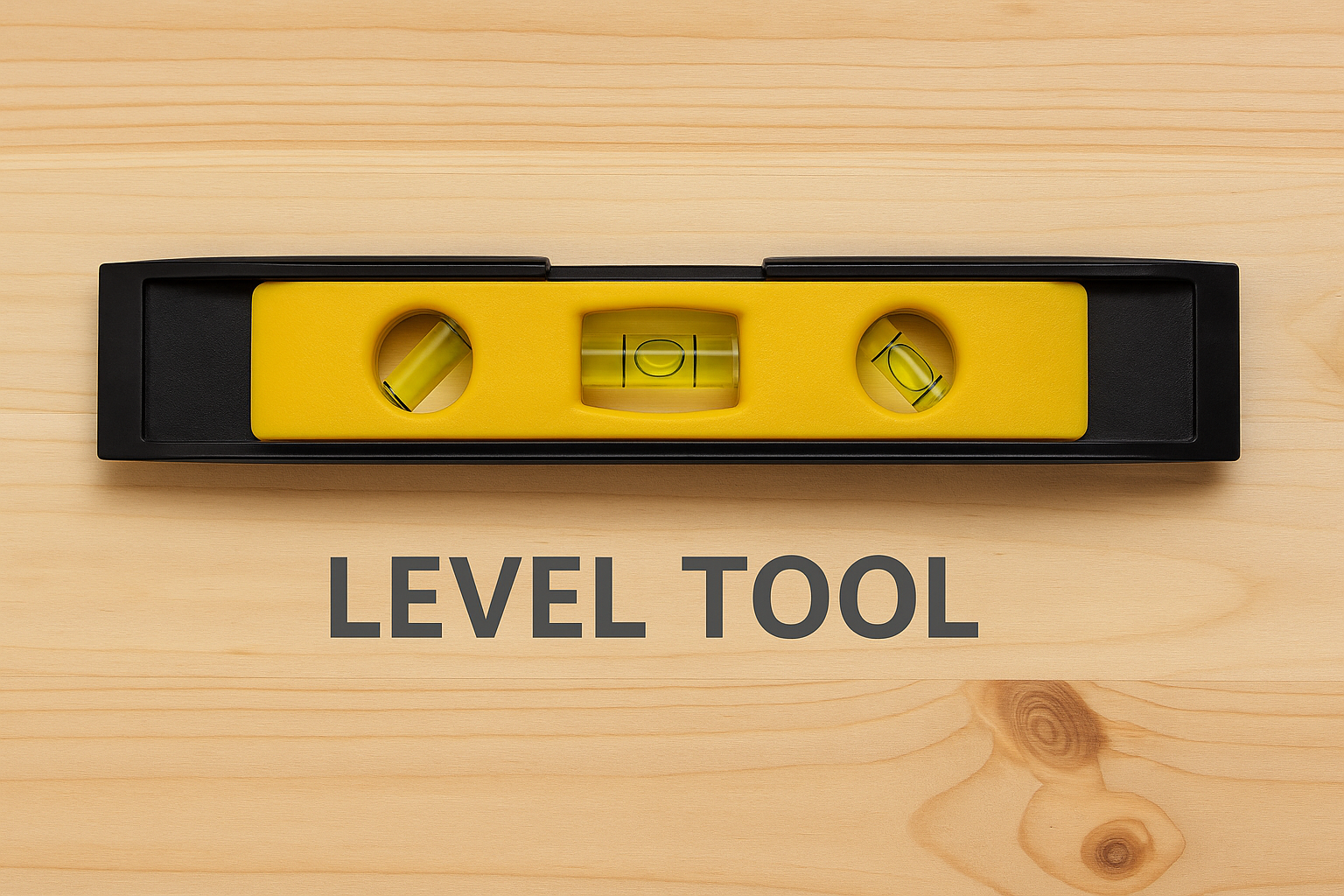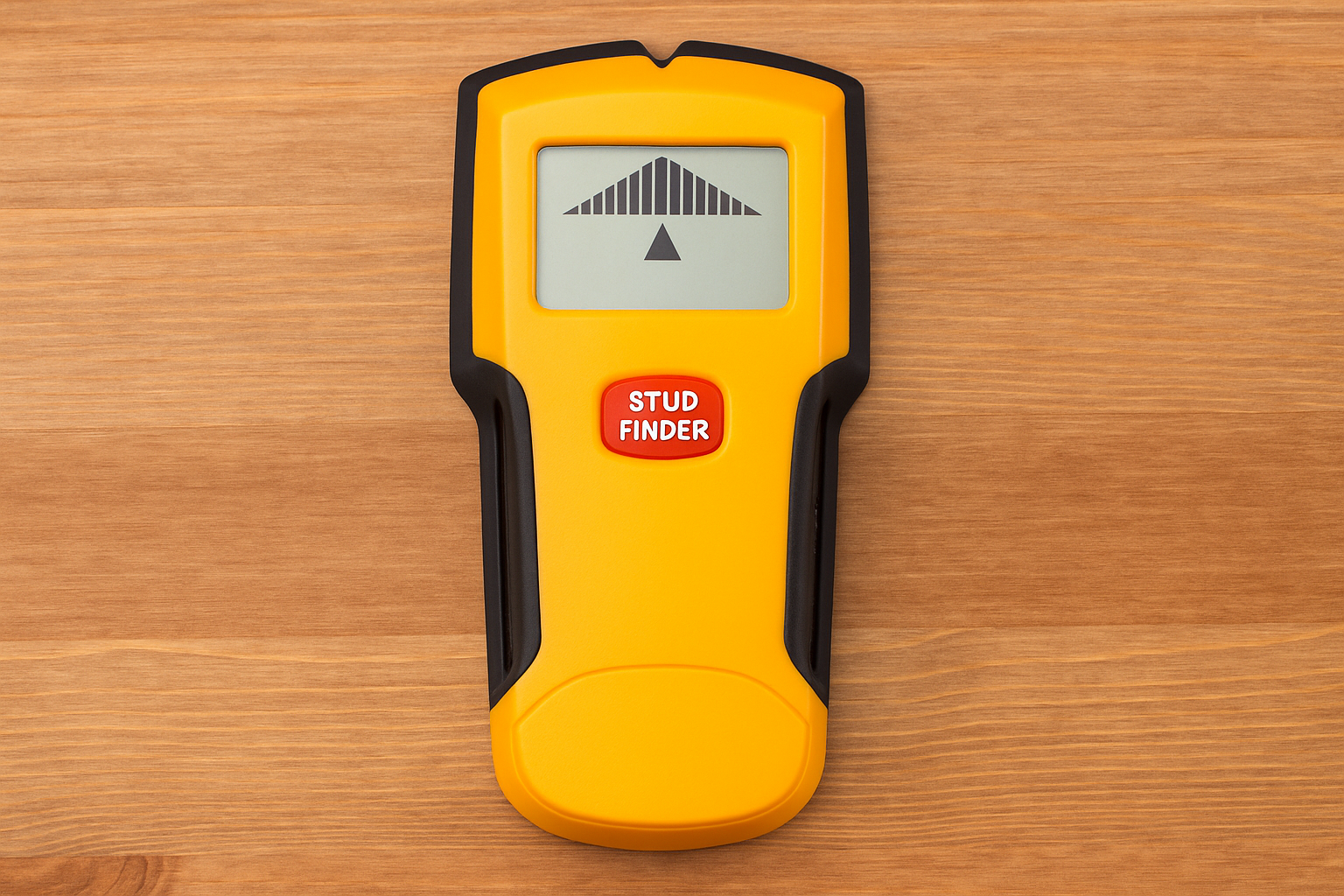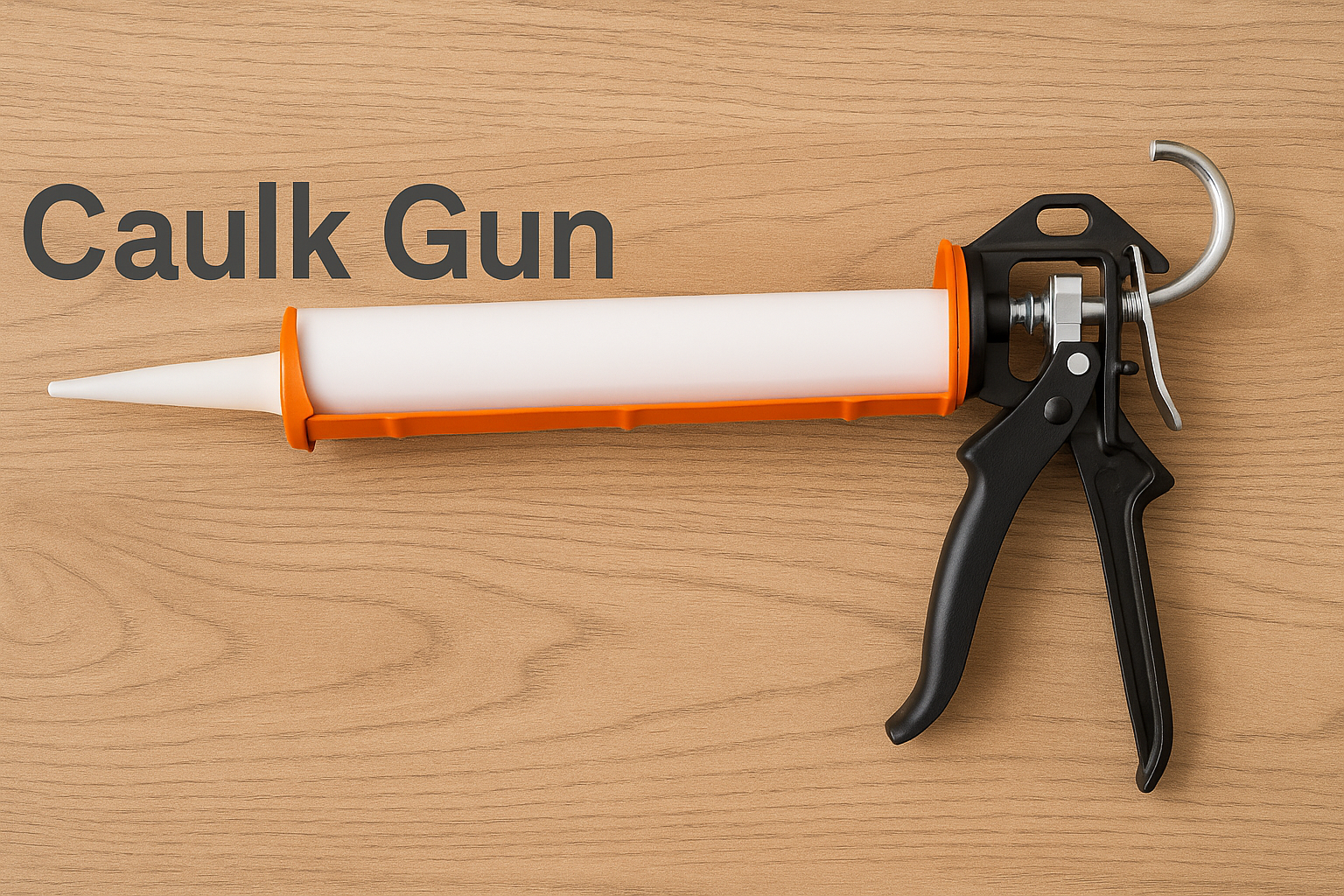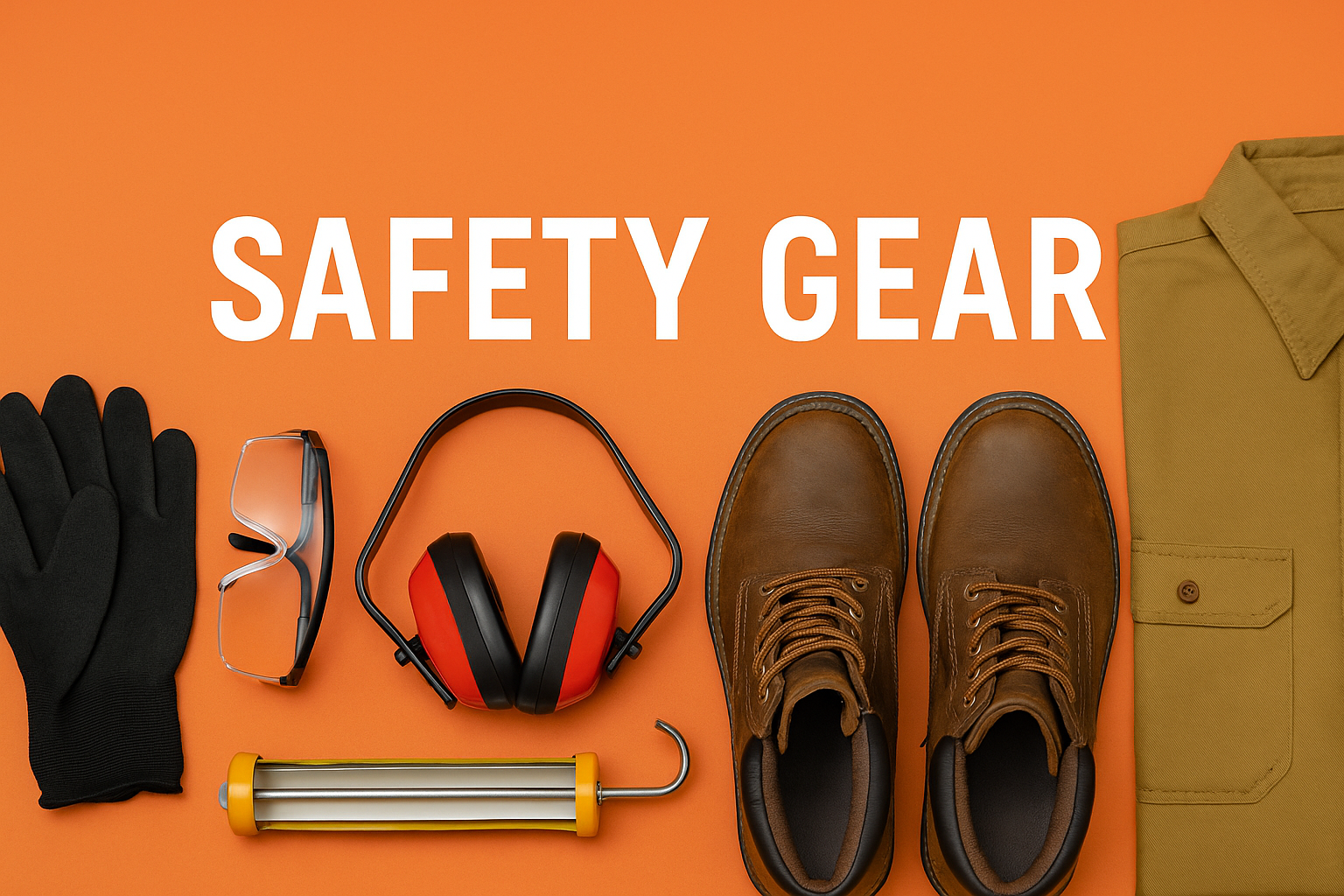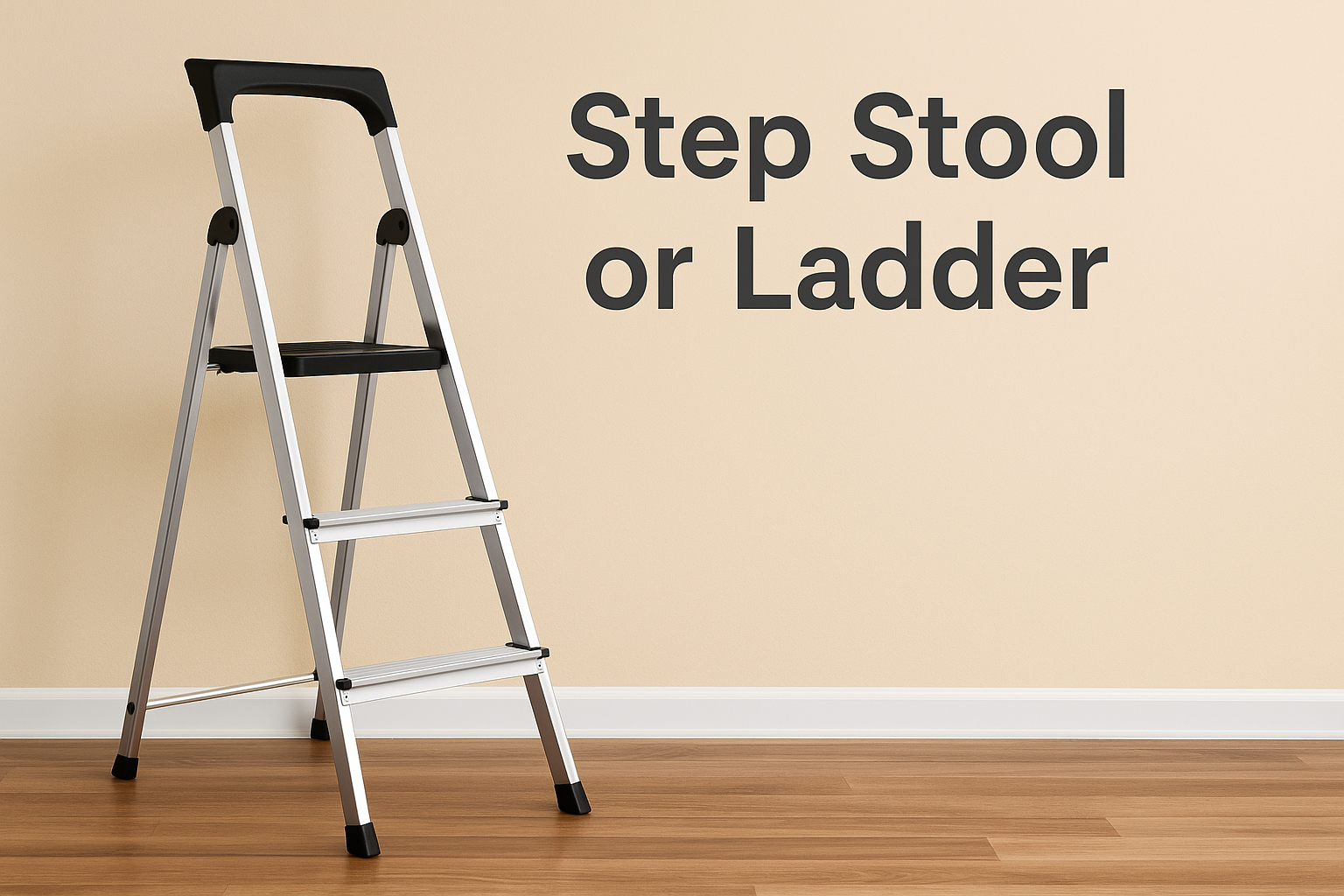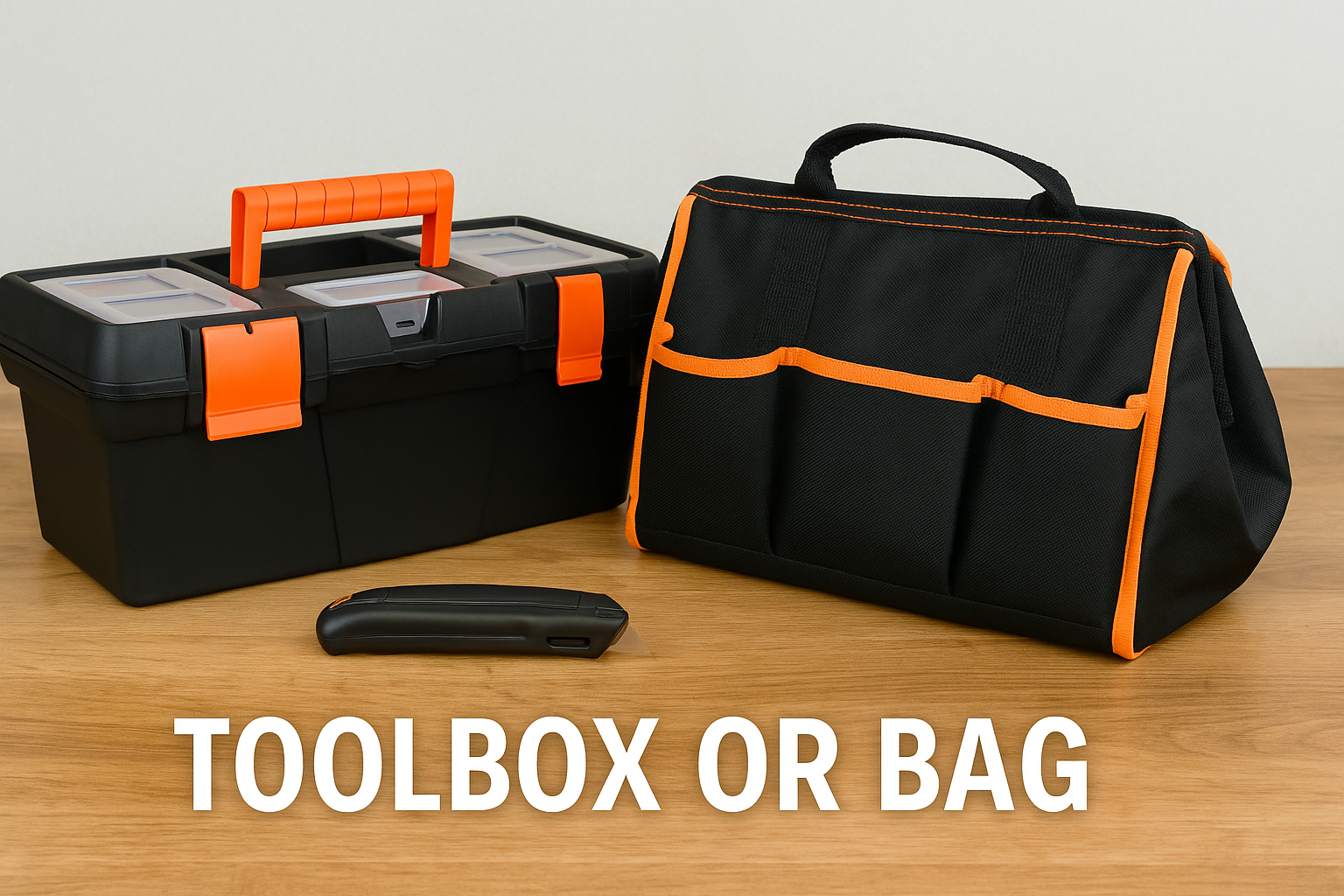Small problems show up in every home. A loose door knob, a leaking tap, or a cracked tile can appear without warning. These issues may look small, but they grow into bigger problems if left alone. Many people wait to hire someone to fix them. That wait often wastes time and money. You can handle many of these repairs on your own.
Fixing things at home gives you control. It also saves money. You do not need special skills or a workshop. You just need a few tools. These tools help with most common tasks. You can fix holes, hang things, or tighten loose parts. This guide shows you what to use and how to begin.
The tools in this list are simple. You do not need advanced gear. These tools are easy to handle, even for beginners. You can use them in the kitchen, the bathroom, or any room in the house. The more you use them, the better you get.
This article shows which tools to choose and how they work. Each one makes home repair faster and easier. Read on to build a basic tool kit that helps you fix things without stress.
1. Claw Hammer
A claw hammer plays a key role in home repair. It drives nails into wood with the flat head. It also pulls them out using the curved claw. This tool handles many tasks. You can fix loose boards, hang wall frames, or break apart soft materials.
Choose a hammer that feels balanced. It should not strain your wrist or feel too light. A 16-ounce size suits most jobs at home. Look for a strong grip. Rubber or soft plastic handles help you hold it steady. A good grip keeps your hand safe during work.
Use the hammer’s flat side to hit nails. Hold the nail steady and strike straight. That keeps the nail from bending. If it bends, use the claw side to remove it. The curved claw gives control. It lifts nails out without damaging the wood.
Keep your hammer in good shape. Store it in a dry spot. Moisture causes rust and weakens the handle. Wipe it clean after each use. Dirt and dust reduce grip and wear it down over time.
A claw hammer belongs in every basic tool set. It helps with fast fixes. It gives you the power to repair, build, or remove things without delay. With this tool, you take charge of small tasks before they grow into big ones.
2. Screwdriver Set
A screwdriver set belongs in every home. Screws hold many things in place. You find them in cabinets, doors, shelves, handles, and remote covers. When something comes loose, you need the right tool to tighten it.
Most homes need two main types. One is the flat-head. It has a straight, flat tip. The other is the Phillips-head. It has a pointed, cross shape. These styles cover most common screw shapes. A good set includes both, in several sizes.
Some sets use one handle with changeable tips. This design saves space. You attach the bit that fits the screw. That makes storage simple and reduces the need for many separate tools. Always use the correct tip. The wrong size can slip and damage the screw.
A damaged screw takes time to fix. It may even need a special tool to remove. To avoid this, press the screwdriver into the screw with steady force. Turn slowly. Make sure the tool fits tight before you begin.
The handle should feel firm and safe. A soft rubber grip works best. It gives better control and protects your hand. Hard plastic may slip if your hand gets sweaty. Pick a handle that feels good in your grip.
Some screwdrivers come with magnetic tips. This feature helps hold screws in place. It works well when you need to guide a screw into a small space. You do not need an extra hand to keep the screw steady.
Always clean your tools. Wipe each tip after use. Dust or oil can reduce grip. Rust can spread and ruin the metal. Keep the set dry and inside a tool box or drawer. That helps your screwdrivers stay strong over time.
You can solve many small tasks with this one tool set. You can fix a loose drawer, tighten a door hinge, or open a control panel. A screwdriver gives you direct control. It saves time and keeps your home in order.
3. Adjustable Wrench
An adjustable wrench is a strong and flexible tool. It fits bolts and nuts of many sizes. You do not need a full set of wrenches when you own this one. A small turn of the wheel changes the size of the jaw. That makes it useful for many home jobs.
Bolts appear in many places. You see them under sinks, in pipe fittings, on chairs, in beds, or on bicycles. When something feels loose or stiff, this tool gives you control. It grips tight and lets you turn with ease. You can fix, loosen, or tighten parts without delay.
The wrench has two jaws. One jaw stays still. The other jaw moves as you turn the dial. This lets you match the size of the tool to the bolt. A firm match helps you turn the bolt without damage. The closer the fit, the safer the work.
Pick a wrench with a smooth, easy wheel. The jaws should stay in place when set. If they slide during use, they can round the edges of the bolt. That leads to damage. A tight lock keeps the grip steady and your hand safe.
The handle should feel strong. It should not slip in your hand. Rubber or textured grips give better hold. A soft grip also makes it easier to apply pressure. Choose a short handle for small spaces. Pick a longer one when you need more power.
Place the wrench on the bolt with care. Open the jaws, slide them over the bolt, and tighten the grip. Do not twist too hard. That can bend the bolt or break the grip. If the bolt feels stuck, apply a little oil first. That helps it move.
After the job, clean your wrench. Wipe off any dirt, oil, or dust. Dry the jaws and wheel. Add one drop of oil to keep the wheel smooth. Keep the tool in a dry space. Moisture can cause rust or damage the moving parts.
This one tool does the work of many. You can fix leaks, adjust bike parts, or build furniture. A wrench helps in places where your hand cannot. It gives strength when you need more force. Every toolbox should include one good adjustable wrench.
4. Tape Measure
A tape measure belongs in every home. It helps you check sizes before you start any job. You can measure walls, doors, windows, furniture, or floor space. This tool gives you the right numbers to plan and build without guesswork.
A small mistake can cause big problems. You may cut a board too short or choose a shelf that does not fit. These errors waste time and money. A tape measure gives clear results and prevents those problems. It helps you get things right from the start.
Pick a tape measure that feels steady in your hand. A 16-foot tape works for most home repairs. Some are longer, but those can feel bulky. The markings should be bold and easy to read. Tapes with both inches and centimeters add extra value.
Most tapes include a lock switch. This stops the tape from pulling back when you let go. It holds the blade in place, so you can read the size without stress. If the tape rolls back too fast, it may snap, break, or pinch your hand.
Check the small hook at the end. This part catches the edge of what you measure. It keeps the tape steady as you pull it out. Some hooks have magnets. That helps when you measure metal parts, pipes, or appliances alone.
Always pull the tape straight. A bent or sagging blade gives false results. Hold it tight. Check the number at your mark. Write it down if needed. Measure twice to avoid wrong cuts or wrong holes.
Take care of your tape. Do not drop it. Do not twist or fold the blade. That can damage the spring inside. Press the button to let the tape go back slowly. Fast retraction can break the case or hurt your fingers.
Wipe the tape if it gets dirty. Dry it before putting it away. Store it in a toolbox or drawer. Keep it safe from water or heat. A clean tape lasts longer and works better each time.
This tool helps you plan every task. You can measure shelves, tiles, panels, or curtains. It helps you cut less, waste less, and fix more. Every smart fix starts with a good tape measure.
Keep your space clean and clear. Clutter adds danger. Learn how dumpster rentals can help your home renovation go smoothly during big projects.
5. utility knife 
A utility knife belongs in every home. It cuts fast, sharp, and clean. Use it to open sealed boxes, trim carpet edges, slice drywall, or cut cords. It makes rough work neat. It saves time and effort.
This tool has a compact, solid blade. It gives you full control in your hand. You can cut deep or shallow. The blade glides through most materials with little force. When it turns dull, swap it. Many utility knives store spare blades in the handle. That makes it easy to keep working.
Some knives fold down like a pocketknife. Others slide the blade in and out. Both designs work well. Pick the one that feels firm and balanced. A loose blade is a danger. Make sure it locks in place. You want a tool that stays steady through every cut.
Do not push too hard. A good blade cuts with little pressure. Forcing it can slip the edge and cause injury. Change blades before they lose their edge. Sharp tools work better and protect your hands.
Keep the knife where it stays safe. Lock it shut or fold it in. Never leave it on a floor or open shelf. Wipe it clean after use. Dust, glue, or rust makes it stick. A smooth blade cuts best.
This is not just a cutter for packages. It is a must-have tool for home jobs, craft work, and repairs. Use it with care. Store it with thought. A sharp utility knife is not a toy. It is a trusted tool for people who take work seriously.
6. Pliers Set
A pliers set adds strength to your hands. It helps you hold, twist, pull, or cut with control. Some parts are too sharp, too tight, or too small to grab. Pliers fix those problems fast and safely.
You may need to pull out a nail, turn a rusted bolt, or cut an old wire. Your fingers cannot do that. A strong pair of pliers can. This tool grips tight and does not slip. It keeps your hand safe and your work smooth.
Most toolkits need three types of pliers. Needle-nose pliers have a long, narrow tip. They reach into tight corners and hold small parts. Slip-joint pliers adjust to fit thick or thin objects. They work well on pipes, bolts, and fittings. Cutting pliers cut wires and plastic ties. They leave a clean edge and take little effort.
Each type has a clear use. A full set gives you more control. Choose pliers made of high-quality steel. The jaws should stay firm when closed. Loose jaws can slip and cause injury. Handles should feel soft and strong. Rubber grips stop your hand from sliding.
Use each tool the right way. Do not cut thick nails with fine tips. Do not bend hard wires with small cutters. Wrong use can break the tool or hurt your hand. Match the job with the right pliers every time.
Wipe your tools after use. Remove dust, grease, or moisture. Add one drop of oil to the joint if it feels tight. Keep your set in a dry space. Water can cause rust. Rust makes the jaws weak and the grip rough.
Pliers work where your fingers fail. You can fix wires, pull staples, remove nails, or hold parts in place. They make tough jobs easier. Every home toolkit should include a strong, complete pliers set.
7. Cordless Drill
A cordless drill is a smart tool for home repair. It drills holes and drives screws without cords. The battery gives you freedom to move. You can work in any room without searching for a plug.
This tool works on many tasks. Hang shelves. Fix doors. Build furniture. Attach wall hooks. A cordless drill makes these jobs quick and easy. Press the trigger, and it goes to work.
Choose a drill that feels strong and balanced. It should not feel too heavy in your hand. Most home jobs need at least 12 volts. Some tough tasks may need 18 or 20 volts. A second battery helps. Use one while the other charges.
Look for a rubber grip. It helps you hold the drill steady. It keeps your hand from slipping. Choose a model with two speeds. Use low speed for screws. Use high speed for holes.
Pick the right bit. Use wood bits for wood. Use metal bits for steel. Use sharp bits only. Insert the bit into the chuck and turn it tight. A loose bit can slip and ruin your work.
Drill with care. Start slow. Keep the drill straight. If you tilt it, the hole may come out wrong. Do not press too hard. Let the drill do the work.
Take care of your battery. Do not overcharge it. Store it in a dry, cool place. Charge it before you start a task. A full battery gives better results.
Clean the drill after each use. Wipe the handle. Clear the vents. Keep the bits in a case. Keep them dry and sharp. Dull bits waste time and break materials.
A cordless drill helps with big and small jobs. It gives you power, speed, and control. Every tool kit should have one.
8. Level Tool
A level checks if things are straight. It shows if a surface sits flat or leans to one side. Use it to hang pictures, place shelves, or install cabinets. This tool helps you make clean, even work.
The tool has a small liquid-filled tube. Inside, a bubble floats. When the bubble stays between the lines, the surface is level. If it moves, the surface tilts.
Pick a solid, well-built level. A 24-inch size works for most home jobs. It fits across walls, furniture, and boards. Some levels come with magnets. These stick to pipes and metal frames to keep both hands free.
You can also use small levels. Pocket sizes work in tight spaces like outlets or corners. Digital levels show numbers on a screen, but a simple bubble type is enough for home tasks.
Place the level flat on your surface. Wait a second. Watch the bubble. It must sit between the lines. Flip the tool and check again. This confirms the reading.
Keep your eyes level with the bubble. Do not look from above. Keep the tool still. Do not press down. That can move it and give a false result.
Clean the level after use. Wipe off dust and store it flat. Avoid dropping it. A damaged level gives bad readings and can ruin your work.
Even a small tilt can throw off your whole setup. A crooked frame or shelf looks sloppy. A level keeps your lines clean and sharp.
Every home tool kit should have a level. You may not use it daily, but when you need it, it makes all the difference.
9. Stud Finder
A stud finder helps you locate studs inside your walls. Studs are the wooden beams behind drywall. You need to find them before you drill, hang shelves, or mount a TV. Screws hold better when they go into solid wood, not just drywall.
This tool scans the wall and shows where the stud sits. Most models use sensors to spot changes in density. Some tools also find metal, wires, or pipes. This keeps you safe and avoids damage during home fixes.
Choose a stud finder that works well on drywall. Most homes have drywall, so this type fits your needs. Some tools also scan deep walls or thick plaster. Read the label before you buy.
To use it, place the tool flat on the wall. Press the power button. Move the tool slowly in a straight line. When it finds a stud, the light or beep will alert you. Mark the spot with a pencil.
Move the tool left and right to find the stud’s edges. Mark both sides. This tells you the stud’s full width. Now you can drill or hammer in the right spot. You will not guess or miss the target.
Some tools use a magnetic sensor. These find nails or screws in the wall. It works, but not as well as a sensor-based finder. Sensor types give more accurate results.
Keep the tool clean and safe in a drawer or toolbox. Do not drop it. A cracked sensor will not work right. If it takes batteries, change them when the tool stops working or gives weak signals.
Using a stud finder stops costly mistakes. You avoid drilling into pipes or wires. You hang things with more strength and less risk. It keeps your work safe and solid.
Every home kit should have a stud finder. You may not use it often, but when you hang something heavy, it matters.
“For more ways to improve your space, read our Home Improvement Guide with Easy Home Upgrade Tips.”
10. Flashlight or Work Light
A flashlight or work light helps you see in dark spots. It lights areas under sinks, behind machines, or deep in closets. Without it, you may miss cracks, leaks, or worn wires.
Pick a light that feels strong in your hand. LED models shine bright and last longer. They use less power and suit most repair jobs. Some lights stand on their own. Others clip to edges or stick to metal with magnets.
Use a flashlight for fast checks in tight spaces. Use a work light when you need both hands free. It lights the whole area and keeps your work clear.
Choose a light that resists drops, dust, and water. A waterproof one works well in basements, bathrooms, and outdoors. It keeps working in damp or rough spots.
Charge it often or keep spare batteries close. You do not want it to go out mid-task. Store your light in a spot that’s easy to reach.
Good light keeps your eyes safe. It helps you find issues early and fix them right. Every home repair kit needs one solid flashlight or work light.
11. Putty Knife
A putty knife makes wall repair quick and neat. It spreads filler, scrapes paint, and smooths rough spots. Use it to patch holes, seal cracks, or prep surfaces before painting.
You will find putty knives in different sizes. A 1.5 to 2-inch blade works for most jobs at home. Wider blades cover more area fast. Narrow ones help in tight corners. One medium blade does the trick for many tasks.
Metal blades last longer than plastic. They stay sharp and make cleaner lines. Choose a blade that flexes just a bit. A stiff blade may leave scratches. A soft one may smear the material.
A solid grip matters too. Rubber handles feel good in your hand and reduce slips. They help you stay in control during the task.
This tool does more than spread putty. You can lift floor tiles, remove glue, or open paint cans. Some people even use it to clean grout or scrape off tape marks.
Wipe the blade after every use. Dried putty ruins the edge. Store it flat or hang it to keep the shape. Keep it dry to prevent rust.
A good putty knife makes each fix clean and smooth. It saves effort and adds polish to your work. Every tool kit should have one ready to use.
12. Caulk Gun
A caulk gun seals cracks, gaps, and joints in your home. It blocks water, air, and bugs. Use it near tubs, sinks, doors, and windows. A clean seal stops leaks and makes edges look sharp.
This tool holds a tube of caulk. You press the trigger to push out a steady line. It fills spaces between tiles, walls, or trims. The result looks smooth and neat.
Most caulk guns fit 10-ounce tubes. Pick one with a strong frame and easy-grip trigger. A dripless model works best. It stops flow when you let go. That keeps your work area clean.
Some models include extras. A built-in cutter opens the tip. A seal pin breaks the inside seal. These features save time and reduce mess.
Practice before sealing real surfaces. Use a piece of scrap board. Hold the gun at an angle. Press slow and steady. Keep your hand moving at the same speed. This makes a smooth line.
After you finish, hit the release lever. That stops any extra flow. Wipe the tip clean. Plug the tube with a nail or cap. Store your caulk gun in a cool, dry spot.
Caulking blocks moisture, mold, and cold drafts. It helps save energy and protects walls. A good caulk gun makes sealing quick and simple.
Every toolkit should have one. It helps you finish small fixes the right way.
13.Safety Gear
Never grab a tool without safety gear. A small fix can turn into a serious injury. Sharp blades cut skin fast. Loud drills hurt your ears without warning. Dust and sparks fly into eyes and lungs. Your body needs full protection. Safety gear gives you that shield.
Start with your eyes. Always use safety glasses. Put them on before you saw, drill, or hammer. One flying chip can blind you in seconds. Glasses block the hit. They protect your sight and keep you focused.
Next, guard your hands. Pick gloves made for rough tasks. They must fit tight and stay in place. Gloves protect your skin from sharp edges, heat, and cuts. They also help you grip tools better. A strong grip means fewer slips and safer moves.
Cover your ears. Power tools blast loud sound. That noise may seem fine at first, but it adds up. Over time, it takes away your hearing. Use earplugs or earmuffs. They lower the noise and protect your ears.
Protect your lungs. Many jobs fill the air with dust. Sanding, cutting, or scraping sends tiny particles into your nose and throat. You may not see them, but they still harm you. Wear a dust mask or a strong respirator. Clean air keeps your body sharp and healthy.
Think about your feet. Open shoes have no place in a work zone. Wear boots with steel toes and strong soles. They block nails, glass, and falling tools. One drop can break a toe. Good boots take the hit so you don’t have to.
Dress the right way. Wear fitted shirts and pants. Loose clothes can pull you into a fast-moving tool. Tie back long hair. Remove scarves, chains, and loose items. Stay neat and close to the body. This lowers risk and keeps you safe.
Stay alert. Safety gear helps more than your body. It sharpens your mind. When you suit up, your brain shifts into work mode. You move with purpose. That mindset avoids mistakes and saves time.
Safety gear is not extra. It is part of every job. Never treat it as a choice. Keep your gear close. Use it every time. Safe work starts with smart habits. Never skip the first step.
14. Step Stool or Ladder
Never reach too far. One stretch can end in a slip, twist, or bad fall. Use a safe tool when the job is up high. A step stool or ladder gives you height with control.
Use a step stool for indoor tasks. It works well when you change bulbs, reach kitchen cabinets, or clean fans. Choose one with a wide base and no-slip feet. That stops it from sliding. Make sure the top step is strong and easy to grip. A sturdy stool keeps your balance steady and your work quick.
Use a ladder for bigger jobs. It helps outside when you trim trees, fix gutters, or check roof tiles. Pick a ladder that locks tight. Set it on flat, dry ground. Do not stand on the top rung. Keep both feet and one hand on it as you climb. This gives you more safety and control.
Never stand on boxes, chairs, or random furniture. These tip fast and do not hold your weight. One fall can cause long-term injury. Use real climbing tools. They hold strong and give you a safe step every time.
Store your stool or ladder with care. Keep it dry. Wet steps cause slips. Before use, check the feet, hinges, and rungs. Look for cracks or loose joints. Replace anything weak. Bad gear is not worth the risk.
Be smart. Take your time. Do not rush. People who work safe think ahead. They use gear that fits the job. Even a short fall can hurt. A big one can leave lasting damage. Always climb with the right tool under you.
Working high needs care. Choose safety over speed. Use a step stool or ladder the right way. That choice keeps your feet on solid ground.
15. Toolbox or Bag
Every job needs tools. But tools need a place to stay. A toolbox or tool bag gives your gear a home. It keeps items safe, close, and easy to find. That saves time and avoids stress. It also keeps your work space clean.
Use a toolbox when you stay in one spot. Toolboxes are strong and solid. Most have trays or layers. These let you sort tools in neat rows. Metal toolboxes last a long time. They hold up to drops bumps and heavy loads. Plastic ones are light and easy to carry. Both work well to protect your gear.
Pick a tool bag if you move from place to place. Tool bags are soft, light, and flexible. They slide into small spaces. Most have outer pockets for quick reach. You can grab a wrench or tape fast. Padded straps make them easy on your hands or shoulders. This is good for long days or large homes.
Scattered tools cause harm. They slow you down. They trip your feet. A dropped nail or sharp blade can hurt someone. A toolbox or bag solves this. It gives each item a place. That cuts risk and boosts speed.
Choose the right size. A large box fits many tools but gets heavy fast. A small bag is light but fills up quick. Match the case to your task. Look for a firm handle and secure latches. If it’s a bag test the zipper and strap strength.
Clean it often. Wipe out dust. Remove rust. Check seams and hinges. Broken bags drop tools. A ripped box can cause a mess. Clean storage shows pride in your work. It also keeps gear in good shape longer.
A smart worker knows where each tool is. No guessing. No delay. Just grab and go. That makes jobs smoother and safer. Good work starts with good storage. A toolbox or bag is more than a case. It is your partner on every project.
Detached homes often need regular upkeep and smart tools. Our guide on Detached Family Homes Explained: Space, Privacy, and Value shows why the right tools matter for long-term value.
Frequently Asked Questions
Question Answer What is the most important tool for a beginner? A claw hammer is a smart first choice. It helps with nails, small fixes, and quick tasks. Can I use a chair instead of a ladder? A chair is risky. It can tip or break. Use a step stool or ladder built for safe climbing. How often should I replace utility knife blades? Replace the blade when it feels dull. A sharp blade cuts safer and cleaner. Is a cordless drill better than a screwdriver? A cordless drill saves time and gives more power. It handles big tasks with less effort. Do I need both a toolbox and a tool bag? One may be enough. A toolbox is great for home use. A tool bag is better if you move around. What safety gear should I wear for basic DIY? Gloves, safety glasses, and ear plugs are smart picks. They guard your hands, eyes, and ears.
Conclusion
Every task becomes easier with the right gear. A small fix or a large repair, it all starts with planning. You need tools, safety items, and smart habits. Skipping one step leads to delay, injury, or damage. A safe job site is not luck. It comes from care, control, and clear choices.
Use tools that fit your task. Handle each one with respect. Keep them sharp, clean, and within reach. Store them in a proper case. A toolbox or bag saves time and stops mess. Always climb with support. A ladder or step stool keeps you safe. Never trust chairs or random boxes. They break, slip, and hurt.
Wear your safety gear. Protect your hands, eyes, and body. Gloves, goggles, and earplugs are not just extras. They stop real harm. Many injuries come from small mistakes. One spark, one slip, or one loud tool can change everything. Stay alert. Think before you act.
Look at your space before you start. Clear the floor. Check the air. Keep wires tucked and sharp items off the path. If something feels wrong, stop. Fix it first. A few minutes of care beats hours at a hospital or money lost to damage.
Smart workers take no risks. They do not rush. They stay ready. Each job is a chance to do it right. And doing it right means safe steps from start to finish.
Your hands build. Your tools help. Your safety gear protects. Put them all to use. Work sharp. Work safe. Work proud.
Disclaimer:
This article offers general home repair advice. It does not replace professional guidance. Always use tools properly and follow local safety codes. Seek expert help for complex or dangerous tasks. Use this information at your own risk.

